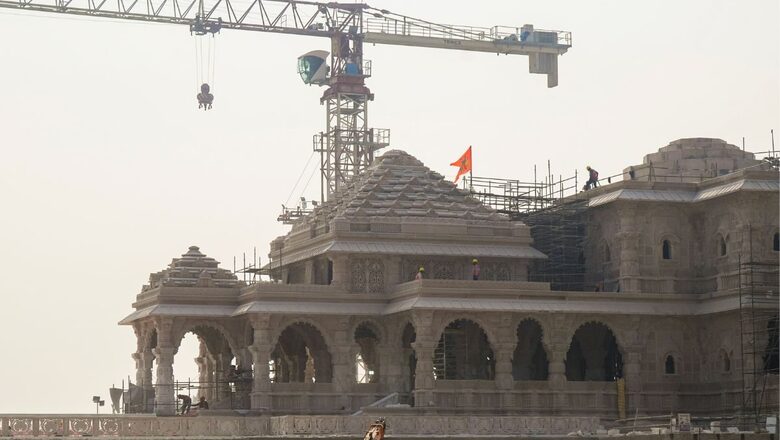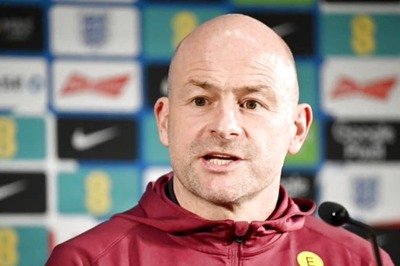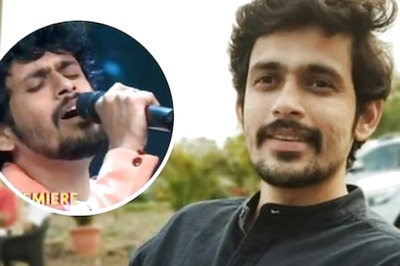
views
The journey towards a majestic temple at Ram’s birthplace has been decades-long. As a journalist, I have had the chance to be at the Ayodhya site three times – in 2005 during a terrorist attack, in 2019 just days after the Supreme Court judgment paved the way for the temple to come up, and last year while the new temple was taking shape. Each visit left an indelible mark on my memory and reinforced why this 67-acre patch of land was so vital for a belief.
It was a summer morning in 2005 when a sensational news flash made me and a photographer rush from the office of The Indian Express in Lucknow to Ayodhya, a two-hour drive back then. Terrorists had struck at the temple site, armed with grenades, rocket launchers and bombs strapped onto their bodies. When we reached the site, we saw the body of one of the killed terrorists who got blown up – our photographer captured it too.
The sight we saw was sensational. Five armed LeT men had blown up their vehicle to breach the temple’s security grill and reached within 100 metres of the makeshift temple, to blow it up with either grenades or the bombs strapped to their bodies. They had reached the ‘Sita Rasoi’. Had it not been for the CRPF personnel who gunned them down in an hour-long encounter, this could have been a national crisis bigger than the 1992 demolition of the Babri Masjid.
Ayodhya then was a sleepy town with little development, the only big hotel was ‘Shane-e-Awadh’ nearby in Faizabad where we stayed put for the next 10 days to unravel the developments as the bodies of the terrorists were quietly buried in a local graveyard the next morning. The makeshift temple was under a small tent and heavily guarded, but security chinks had been exposed in the perimeter making heads roll in the Uttar Pradesh police under the Mulayam Singh Yadav-led government.
Everyone knew it was a close shave. Pilgrims at the temple told me: “Prabhu Ram tent mein hain, par woh unhe nahin maar paaye (Our God is under a tent, but they did not succeed in blowing him up).”
The Hope in 2019
After a long litigation, it was finally in 2019 that the Supreme Court paved the way for handing over the 67-acre site to the Hindu side to build a Ram temple. The judgment’s pronouncement was announced only a night before, making the media rush overnight to Ayodhya. I then rushed there from The Economic Times and found a changed Ayodhya, with shades of development emerging after the Yogi Adityanath-led government had come to power in 2017. The ‘Deepotsav’ had been celebrated there only a month ago on Diwali.
The 67-acre temple site was, however, much the same as I had last seen it in 2005 – as if it had stopped in time. Only the security was tighter, the vegetation inside had grown wild, the buildings were dilapidated, and Lord Ram’s white tent had become dirtier. The sight of it upset many pilgrims for the first time.
“It is a shame to see our lord this way…we hope work starts soon on a grand new temple,” they said.
Some even mistook the temple tent to be another security checkpoint (there were multiple ones on the way where you were frisked) till the CRPF personnel told the pilgrims that it was the temple and one could offer prayers from a distance of 10 metres. A board pointed visitors to the temple, asking them to “look right”. A priest sitting there was giving out prasad and you had to move on within a few seconds. But the priest said: “Soon, there will be a big temple.”
Now, Naya Bhavya Ayodhya
A glimpse of the upcoming majestic temple was visible when I visited the site last year. A development plan worth Rs 32,000 crore for Ayodhya is in progress to make it a global spiritual destination for tourists and pilgrims. Once open, the temple is likely to have a footfall of more than one lakh daily and, by 2047, over 10 crore can visit Ayodhya on an annual basis. The temple’s construction will cost Rs 1,800 crore, entirely from donations. The ground floor of the temple is complete and Ram Lalla idols will be installed here and opened for public darshan from January 23, a day after the inauguration.
The first and the second floors of the temple will take another year to complete, by December 30, 2024, and the entire premises over 71 acres would be complete in 2025. A big network of highways, roads, infrastructure, townships, grand entrance gates and multilevel parking facilities is coming up in Ayodhya as part of the sprucing up of the town, with a new airport and upgraded railway station already operational now. The Saryu riverfront is a sight to behold with new and clean ghats. Ayodhya town is unrecognisable from what I saw in 2005.
The narrow lanes of Ayodhya, famous for the Hanumangarhi temple and the various types of pedas sold at shops here, will now be known foremost and rightfully by its biggest identity – the birthplace of Ram and a majestic temple befitting the belief and faith of millions.

















Comments
0 comment